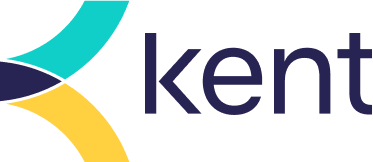Oil and gas: Adopting an all-embracing approach to navigate digital transformation

Technological advancements are reshaping the oil and gas industry at varied levels. Companies that are able to exploit the full potential of digital transformation will be better placed to deal with future challenges and achieve greater financial performance and business growth.
Given the unprecedented pace at which digitalisation is reshaping various industries, the oil and gas (O&G) industry players are seeing the value it offers to improve safety and environmental performance while simultaneously making gains in productivity and cost reduction programs. A study – undertaken by Oil & Gas IQ in partnership with OpenText – indicates that business modernisation is the main driver behind respondents’ digital transformation projects with applications in asset and integrity management, and predictive analytics forming key elements of their programs. However, for many operators, the path to digital integration remains challenging due to the scale and complexity of their operations. A clear road map with an all-embracing approach involving people, processes and tools is key to navigating this digital transformation, unlocking its full potential and driving more value.
The digital deluge
Digital technologies are helping almost every industry reshape their operating landscapes. In fact, the O&G industry has been at the forefront of embracing some of the major technological advancements, including big data and digital innovation as early as the 1980s. But, for the most part of this decade, it seems to have lagged behind other industries in leveraging the transformational impact of digitalisation.
According to a whitepaper by the World Economic Forum in collaboration with Accenture, digitalisation in the O&G sector has the potential to unlock around $1.6 trillion of value over the next decade (2016-2025). Around $1 trillion of these savings would be for the oil and gas firms themselves, the report shows. Out of these, $580-$600 billion is expected to accrue to upstream companies, $100 billion to midstream firms and $260-$275 billion to downstream companies.
However, while O&G organisations are aware of the operational and monetary benefits that come through digital transformation, they are often wary of challenges associated with integrating new technologies into existing assets and business models.
Depending on multiple factors, the process of becoming a technologically advanced business will have many hurdles along the way. Complexity of technology, human capital development, corporate cultural changes, competing priorities, investment cost, or security are all issues that could become a barrier. The underlying challenge is to walk the digitalisation path at a pace that will encourage innovation, while not compromising on the values that drive the industry – safety, environmental standards, efficient production and profitability. To navigate this progression, it is important to marry innovation with operational excellence, while at the same time reflecting the legacy built up over the years.
Not one-size-fits-all
With the emergence and advancement of digital technologies such as blockchain, digital twin, analytics and AI, visualisation and automation, the production capacities and cognitive abilities of the O&G companies are taking greater steps every year. However, adopting a constructive disruption by consolidating asset management and data integrity for operating facilities is integral to help these companies evolve digitally while walking that careful line between risk and reward.
Analytics and AI are making it possible to access a larger amount of data, while empowering businesses to analyse interactions and identify relationships between data sets more effectively. This can help O&G industry process plants to run more optimally and help the project team respond more quickly to changes in the business environment. At the same time, the advent of blockchain can help the industry optimize the supply chain networks by reducing transactions time and cost through streamlined B2B data exchange among participants, suppliers and distributors.
The use of automation means manual processes can be automated more extensively, resulting in fewer human touch points in the business processes. For example, automating manual portions of daily drilling operations process can save time and reduce safety risks. By having a digital twin approach, companies can use digital scanning to create a highly accurate 3D environment of an asset through data capture. This enables performance monitoring of operations, process and facilities to enhance production while reducing operating costs.
Utilising visualisation techniques, for instance, also allows us to assess the spatial context more effectively in the design phase, plan the construction sequencing more accurately and verify construction against the design as we go, identifying and correcting problems early. For example, SNC-Lavalin used virtual reality (VR) to enhance the traditional design review on a gas-processing facility for one of its clients in the Middle East. As part of the initial engineering review, nine operations and maintenance staff members used VR to scrutinise plant design by applying their everyday knowledge and on-ground experience of what works best in an operating gas-processing plant. The operators identified 32 actionable improvements or defects in the approved design, representing a potential savings of more than USD2.5 million.
However, digital transformation is not a one-size-fits-all question. Given that it is a multi-level process involving many stakeholders, managing people, processes and tools that provide control over the structure, processing, delivery and usage of information is key. In addition, selecting the right engineering and delivery partner who has deep industry knowledge combined with digital capabilities can help operators better assess the business challenges and embed the new technology smoothly into the fabric of a project from start to end. Any organisation that can effectively gather and leverage its own data and manage information to derive value will be better placed to compete. How that can be done most effectively within any particular organisation will define that organisation’s competitive advantage.
This insight is authored by Wassim Ghadban, Vice President, Global Innovation & Digital Engineering
By using our website you consent to all cookies in accordance with our Privacy Policy.










